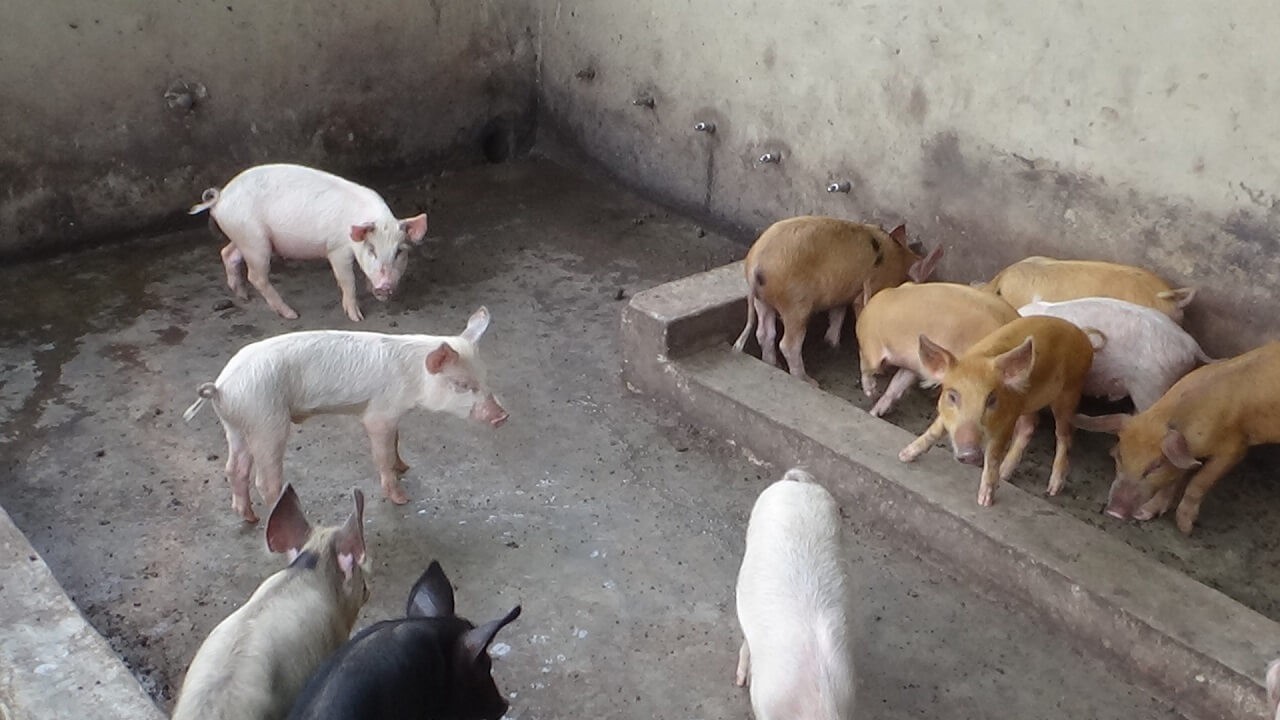
Pig Breeds in Nigeria
February 17, 2019, 2:57 pm
One of the most important secrets of successful pig farming in Nigeria is the type and quality of pigs you have in your farm.
If you get the right type of pig breeds for your farm, you stand a very high chance of having a successful, sustainable and very profitable pig farm.
Pig Breeds in Nigeria
The most common pig breeds for commercial pig farming in Nigeria are the Yorkshire, Landrace, Hampshire, Duroc breeds and their crosses. These breeds produce lean meat combined with efficient feed conversion (3 kg of good feed is needed to produce 1 kg of pork). Compared to local pig breeds, these commercial breeds have good resistance to diseases and suffer less from hot weather and low quality feed.
Pig Breeds in Nigeria
The characteristics of the pig breeds you can use for pig farming in Nigeria are listed below:
Yorkshire Pig Breeds
They are white, long body with erect ears, they make good mothers and have a live weight for a mature male 300 to 450kg and female 250 to 350 kg. They have high prolificacy, with a litter size of 12, weaning percentage greater than 70%, and 7 pairs of teats. They can also be used for upgrading local breeds.

Landrace Pig Breeds
They are white with large drooping ears, long body and they make good mothers. They are one of the newest breeds of a Danish origin. They are noted for having the highest number of pigs per litter. The average live weight of matured male is 310 to 400 kg and female is 250 to 330 kg. They are good for bacon production. They also have high prolificacy, average litter size of 11 with a good weaning rate.
Hampshire Pig Breeds
They are black with white belt and are muscular. Average live weight of matured male is 300 kg and female is 250 kg. They are good for bacon and lard production. They have a high prolificacy, with a litter size of 9 with high weaning rate.
Duroc Pig Breeds
They are red, muscular with partially drooping ears and desirable as sires. They grow the fastest out of all the other breeds. Average live weight of matured male is 300 kg and female is 250 kg. They have a high prolificacy, with a litter size of 9 with high weaning rate.
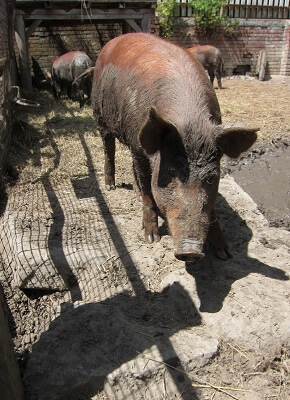
Crosses between Native and Exotic for Improvement of Local Pig Breeds
Breed improvement is important for obtaining improved and high yielding pig breeds. The main purpose of breed improvement is to introduce a positive characteristic into a local breed. For example, by crossbreeding an indigenous sow with an exotic boar; the offspring is likely to inherit the body shape and good growth rate from its father and the tolerance to environmental stress from its mother.
Pig Breeding Methods
Pure-breeding
This is the process of mating purebred individuals of the same breed. The progeny or offspring has the same genetic makeup. The major objective of pure-breeding is to identify and propagate superior genes for use in commercial pig farming primarily in crossbreeding programs as well as to propagate and identify superior females for maintaining valuable genetic material. Furthermore crossbreeding will not be worthwhile unless superior pure bred pigs are used.
Out-breeding
This is the process of mating individuals of the same breed but who are less closely related than the average of the breed. There should not be a common ancestor for at least four generation back in the pedigree of the boar and the females with which he is mated. It is a useful mating system in purebred pigs.
In-breeding
This is the process of mating between individuals of the same breed but which are more closely related than the average of the breed. This could be between as close individuals as full sibs or sire – daughter, mother - son. The effect of inbreeding is the concentration of common genes in the offspring. This high frequency of homozygous gene pairs applies to both desirable and undesirable traits. Many undesirable traits e.g. hernia and cryptorchidism involve recessive genes thus inbreeding perpetuates their expression phenotypically. In-breeding causes decrease in litter size and increases mortality. Inbred sows are inferior in milking and mothering ability. It delays sexual maturity in gilts and boars. Inbred boars have less sexual libido while inbred gilts have fewer eggs during oestrus and farrow smaller litters than those out bred.
Effect and Process of In-Breeding
- Sow with newly borne litters about 12 piglets.
- Male and Female piglets taken by another farmers to his farm.
- Breeding between the same siblings.
- Female giving birth to about 9 piglets
- About 25 % less number of smaller and weak piglets are born as compared with first sow and some of them were borne dead
- Male and Female piglet taken by another farmers to his farm
- Breeding between the same siblings about six piglets.
- About 50 % less number of vey smaller and weak piglets born as compared with the first sow, some of them were born dead
Cross breeding
This is the process of mating two individuals from different breeds thus introducing into the progeny or offspring a gene combination that is different from that existing in either parent or in the breed of either parent. Cross breeding can involve two or more breeds, depending on the desired result. The sole purpose of cross breeding is to take advantage of the observed improvement in performance of the progeny above that of either parent- hybrid vigour or heterosis.
Effect and Process of Cross Breeding
- Local sow with her piglets
- Exotic sow with her piglets
- Female piglet from local sow and Male piglet from exotic sow are taken by a farmer to his farm for breeding propose
- Breeding between these male and female pig
- Healthy and bigger body size piglets are born from the local sow
- All male piglets are sold and few selected crossed bread female are kept for breeding
- Another exotic male which is not in relation with the herd introduced for breeding between them
- Very healthy, strong, active and fast growing piglets are born
Effect and Process of Negative Selection
- Sow with newly borne litters about 12 piglets.
- Stronger and healthy piglets were either sold or castrated for meat purpose
- Smaller and weak Male and Female piglets kept for breeding purpose.
- Breeding between the same siblings.
- Female giving birth about 9 piglets
- About 25% less number of smaller and weak piglets are born as compared with first sow and some of them were borne dead
- Among the piglets stronger and healthy either sold for cash or castrated for meat and smaller and weak are kept for breeding purpose
- Breeding between the same siblings about 6 piglets.
- About 50% less, smaller and weak piglets born as compared with the first sow, some of them will borne dead.
Best Pig Breeding Practices
Every year the breeding male pig must be changed with an un-related herd to avoid inbreeding problems. The boars and sows to be used for breeding should be selected according to these guidelines:
Selection of Breeding Gilt
Areas to be considered while selecting breeding Gilt (young female pig that has not yet mated, or not yet farrowed, or after only one litter) are as follows:
- Gilts selected to have at least 12 teats so as to accommodate a large litter
- Gilts to be selected from sows, which wean 9 to 10 or more piglets per litter and are known to be good mothers and first farrowing at one year of age and farrowing interval of seven month.
- Select breeding gilts at weaning period, further selection should be done 5 to 6 months of age.
- Select fast growing weaners. These will likely consume less feed per unit live weight gain. Thus less costly to keep.
- Select gilts which have developed hams and comparatively light heads.
- The selected gilts should have good body confirmation i.e. strong legs, sound feet etc.
- Gilt should not select for breeding purpose having supernumerary and inverted teats, and fat deposited at the base of the teats
- Guilt must be at least 8 months old at first service.
Selection of Breeding Boar
It is extremely important to select a good boar since it contributes half the quality of the herd. Areas to be considered while selecting breeding Boar (male pig):
- Boar must have sound feet with good, full hams, uniform curve at the back and of good length.
- Boar must have at least 12 nicely placed rudimentary teats so as to pass on this characteristic.
- Boar must be selected from sows, which wean 8 to10 or more piglets per litter and are known to be good mothers.
- Boar must be selected from the herd which is having normal sex organs, active, healthy and strong.
- Selection must be done before castration i.e. at 4 weeks. Select the biggest from the litter.
- Boar must be at least 8 months old at first service.
Care and Management of Breeding Boar
High priority should be given to the management of pigs newly introduced into the breeding herd in order to achieve maximum reproductive efficiency. Good reproductive and nutritional management pays dividends through an increased number of pigs farrowed live and weaned. The following boar and gilt management practices will assist in the maximization of fertility and longevity.
Upon completion of test, boars should be fed at a level of energy that will prevent excessive fat deposition. This practice should help ensure that they are physically adept and sexually active. Nutrients other than energy should be provided to meet the minimum daily recommended allowance.
Boars tested individually or in small groups in close confinement should be managed upon completion of the test in a manner to develop physical hardening and to stimulate sexual arousal and libido. Where possible, this should be done before delivery to their new owners and might include the following: a) Shifting boars to different locations. b) Providing fence-line contact with cycling females. This may be especially important where the aggressiveness of the boars precludes mixing them together.
Although boars tested in large groups and in less confined settings are likely to require less physical conditioning and sexual stimulation before use, they may also benefit from exposure to the management procedures described for boars reared in close confinement.
Care and Management of Breeding Boar
To be evaluated for reproductive soundness, boars should be at least 7 ½ months of age.
The evaluation should be completed before the breeding period so problem boars can be identified and culled. Boars should be evaluated on the following criteria.
Mating behavior may be evaluated by bringing a gilt in standing heat into the boar's pen and observing the following:
- Libido: Observe the boar's aggressiveness and desire to mate. Boars may need assistance through at least one mating experience.
- Mounting: Boars must have the ability to mount correctly. Some boars may be interested in mounting but lameness, arthritis, or injury may prevent success. Boars that mount the front end of gilt should be gently moved to the proper position.
- Mating: Observe the boar's ability to erect the penis and properly enter the gilt. Examine the boar's penis for normal size and condition. Penis abnormalities encountered occasionally are: (1) adhered or tied penis, (2) limp penis, (3) infantile penis, and (4) coiling of the penis in the diverticulum.
These conditions may be heritable, and boars exhibiting these problems should not be used to produce breeding stock.
Semen Quality
A few boars fail to produce sperm cells. Hence, semen from young boars should be submitted to a check. The simplest way to collect semen from a boar is to allow the boar to mount a gilt in standing heat. First place a rubber glove (latex) on one hand and after the boar begins to extend his penis, grasp firmly the corkscrew end of his penis and bring the penis gradually forward once extended ejaculation begins.
Collect the entire ejaculate into a wide-mouth container covered with a double layer of cheesecloth to separate the gel fraction. The volume of semen obtained is quite variable between boars but averages generally between 200 to 250 milliliters (about 1 cup). If the sperm concentration is high, the semen will be milky in appearance. Boars with watery or bloody semen should be evaluated by a reproduction specialist. Usually 70 to 80% of the sperm should be motile immediately after collection. Low sperm motility is not a serious matter unless the condition persists for several months. Boars that produce semen with no sperm or only a few sperm should be rechecked several times at weekly intervals. If the condition persists, the boar should be culled. The first ejaculate of a new boar may not provide an accurate test and should not be used for evaluation.
Test Mating
To complete the soundness evaluation, two or three gilts should be bred and carefully checked as to whether they return to estrus within 4 weeks. Exposure to conditions or microorganisms on the new farm may have produced temporary infertility. High environmental temperatures, stress of transportation, illness, lameness, or injuries causing high body temperature can alter sperm motility and reduce fertility for up to 8 weeks.
Care and Management of Breeding Sow
At the end of the test, energy intake of selected gilts should be restricted to prevent overweight conditions. Nutrients other than energy should be provided to meet the minimum daily recommended allowances.
Moving gilts to new pens, increased exercise, and daily exposure to boars beginning between 160 and 180 days of age will help stimulate the onset of estrus. Breeding should be delayed until the second or third estrus to increase the probability of large litters and prevent dystocia. Gilts that do not conceive after mating at two estrous periods should be sold. Likewise, gilts that have not expressed heat by 9 months of age should be culled. During gestation, gilts should be fed to gain about 150kg and not become overly fat.
Minimum Breeding Ages for Boars and Gilts
In order for the seed stock producer to measure performance to acceptable off-test weights, delivery of boars and gilts to the buyer is seldom earlier than 5.5 months of age. Sexual maturity and reproductive performance also are highly age dependent. The minimum age for successful breeding in boars is 7.5 months. Gilts should be bred on the second or third heat to take advantage of the expected increase in ovulation rate that usually occurs following puberty.
Effective breeding methods is helped by good record keeping on the farm so ensure you have a system for recording the age, parentage, weight etc. of your pigs.
To learn more pig production secrets and practices for successful and sustainable pig farming, check out our pig farming video tutorials
P.S. If you need high quality and high-yielding pig breeds for your farm, call +2348089864121 or send a mail to agsolutions@agricdemy.com
And if you are interested in starting a pig farming and processing business, click here to buy our pig farming and processing business plan that will show you how to start a profitable and successful pig farming and processing business


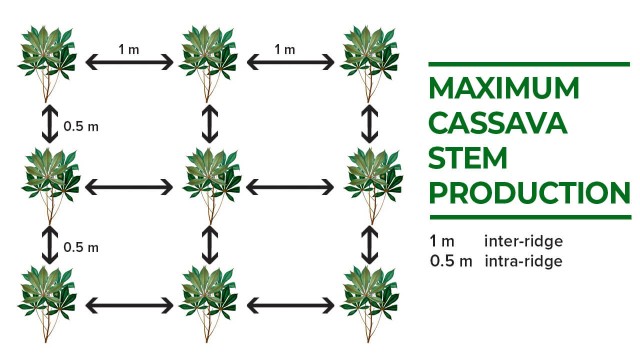
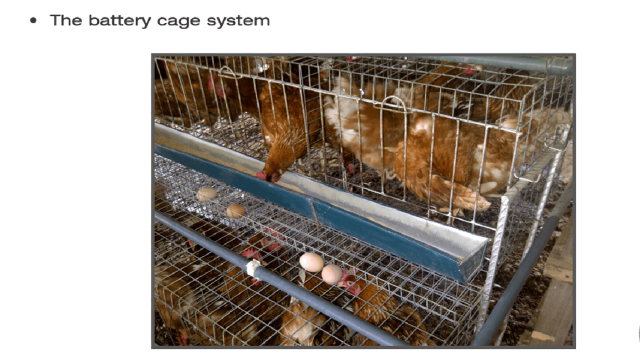


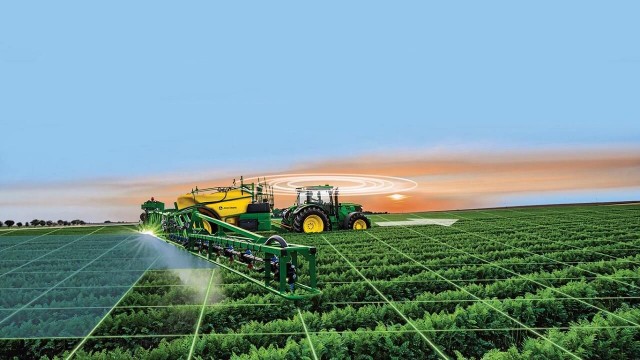

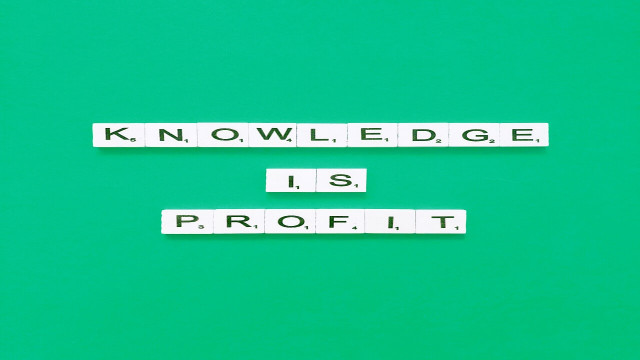
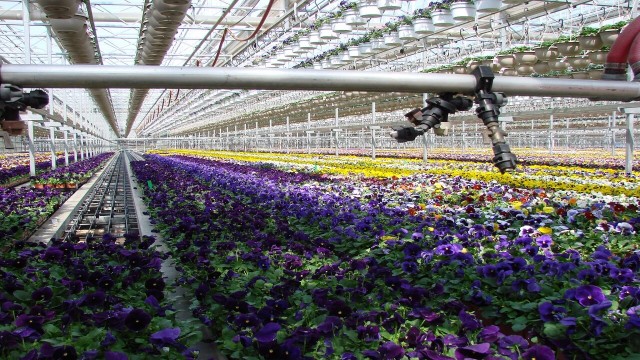
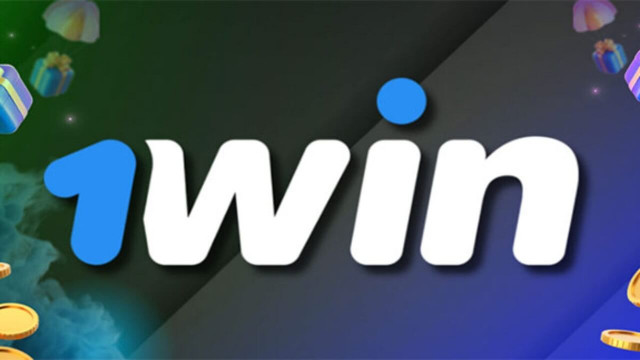

Share This Article: